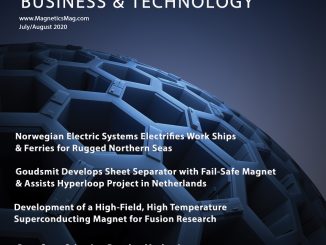Reduced-Helium Magnets from Philips aGame-Changer in MRI Scanners
Maximizing image quality is a given in any new magnetic resonance imaging scanner. Delivering that capability to the maximum number of patients and doing it cost effectively, however, depends on optimizing workflows and maximizing scanner up-time. Many radiology departments are currently under extreme pressure to perform more MRI scans on more patients, not only due to the aging population but also to deal with the backlog of cases resulting from the Covid-19 pandemic.
Driven by Global Pandemic, Magnetic Diagnostics Tools from Luminex Take Part in 98% Jump in Business
Driven by growth from the global pandemic, Luminex revenues overall rose 35% in the third quarter of 2020 compared to the same period a year earlier, but its molecular diagnostics sector which encompasses magnetic particles and magnetic separations tools for laboratory analysis nearly doubled.
World’s Most Powerful Tidal Turbine Launched Offshore Scotland
Tidal power holds a lot of promise for generating clean energy. As with power from the wind, it can require a lot of engineering and magnets to harness.This spring that promise stepped closer to reality when Orbital Marine Power Ltd, a Scottish-based developer of floating tidal turbine technology, successfully launched its 2MW tidal turbine, the Orbital O2. The 680-ton turbine was towed from the Port of Dundee on April 22 to waters offshore Orkney Island.
Magnetic Levitation Studied at JPL for Moving Payloads Around the Moon
While rich tourists may be thinking about a space voyage, scientists at NASA have their sights on more mundane pursuits, like moving payloads around the moon. Magnetic levitation could be the key. Considered early-stage research into futuristic space ideas, a lunar levitation track system is one of several advanced space concepts being studied at NASA’s Jet Propulsion Laboratory in Pasadena, California.



